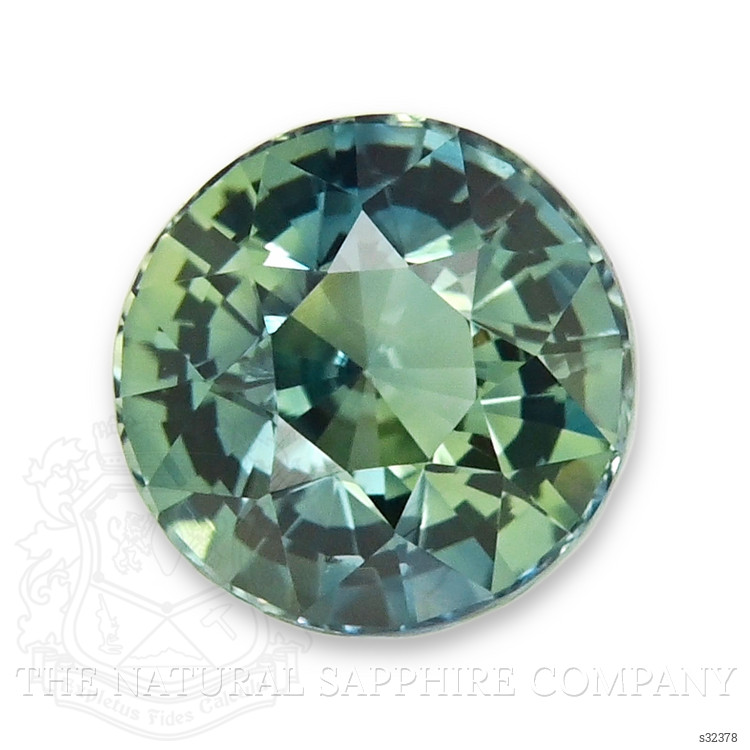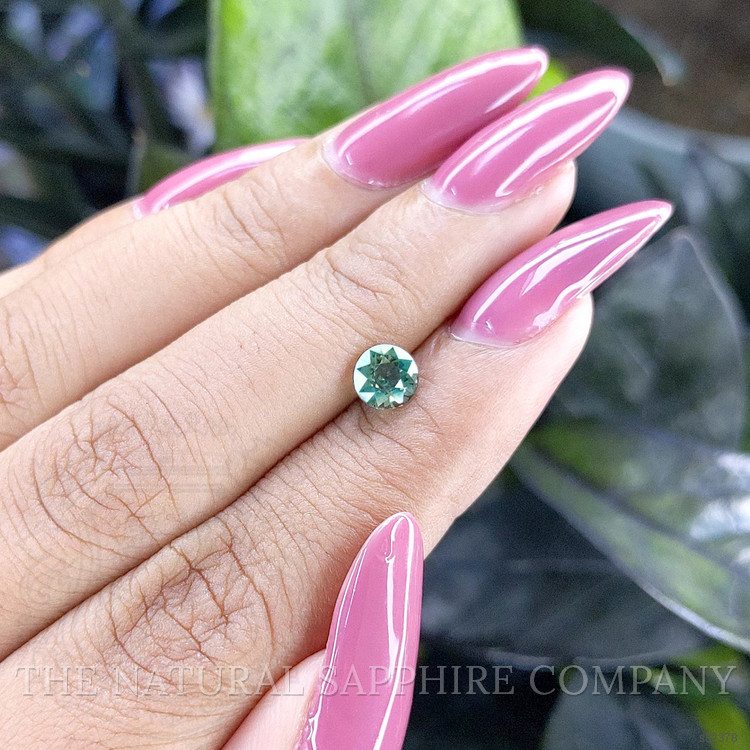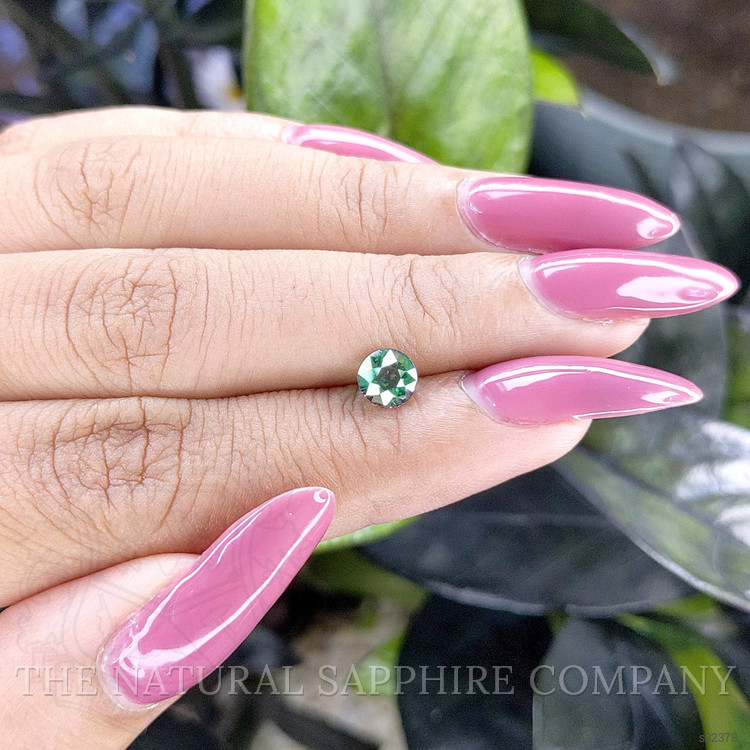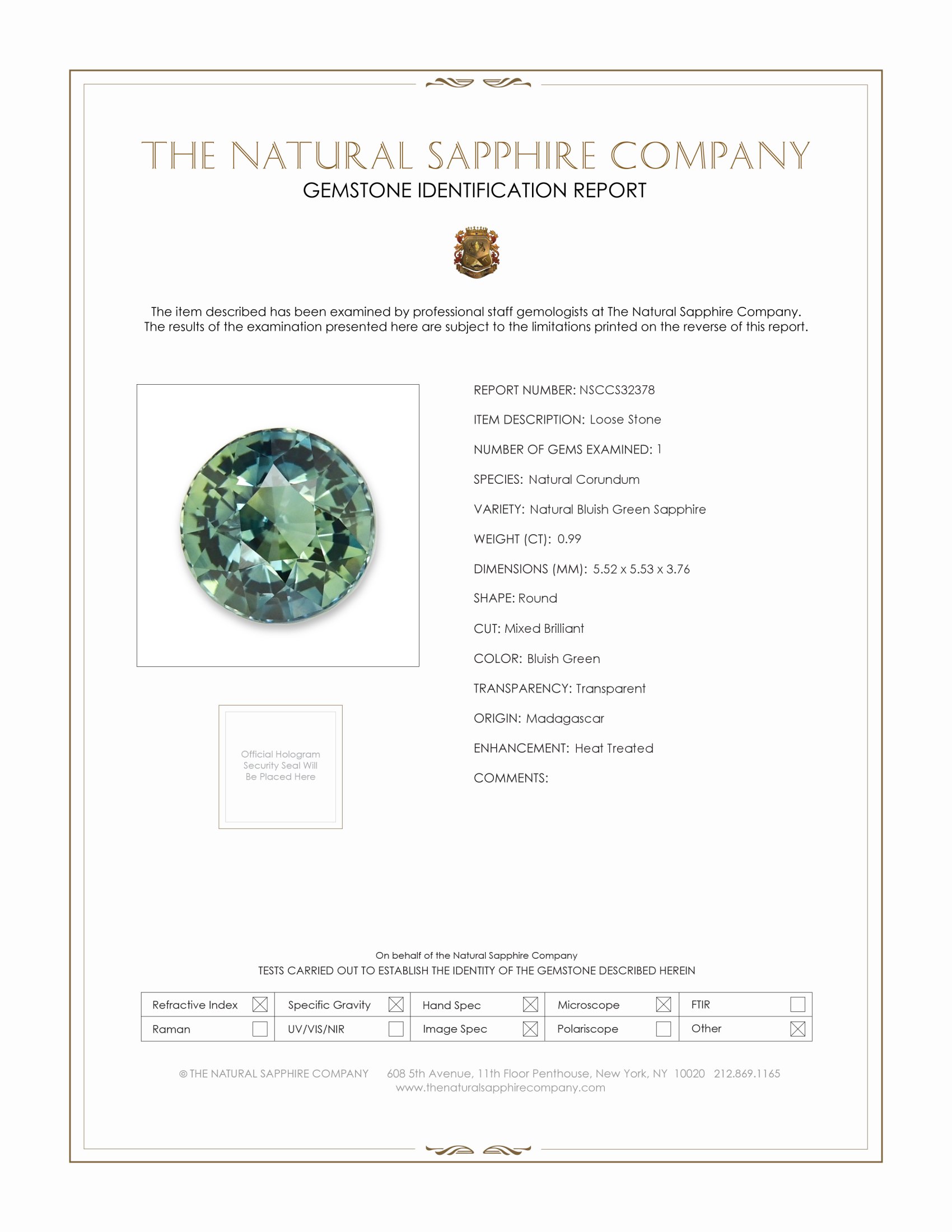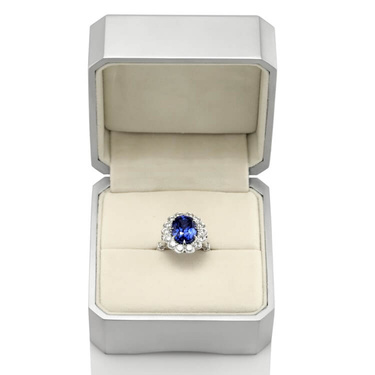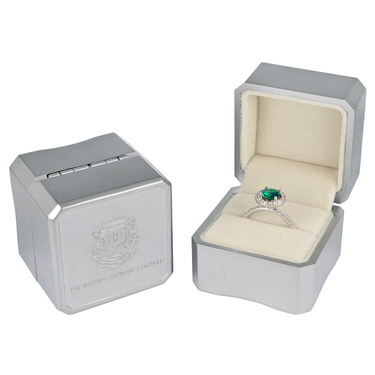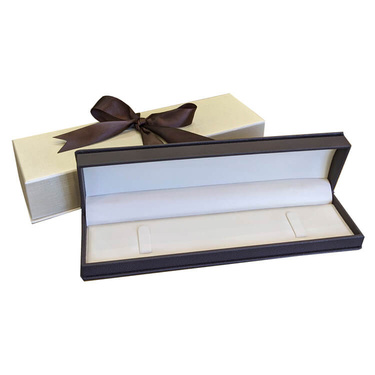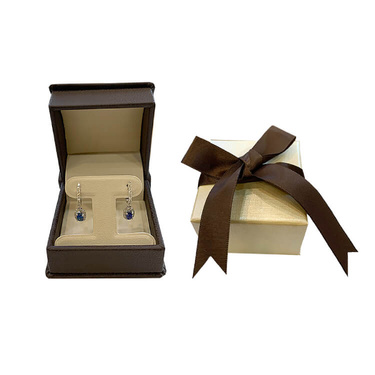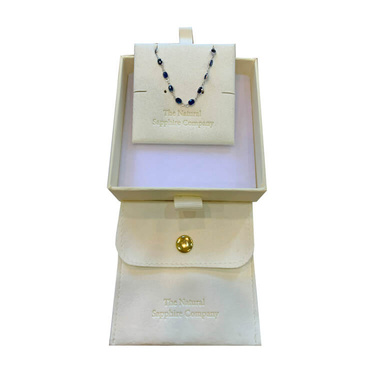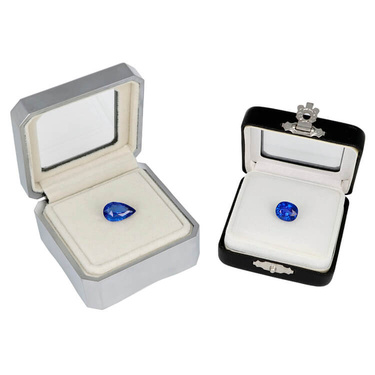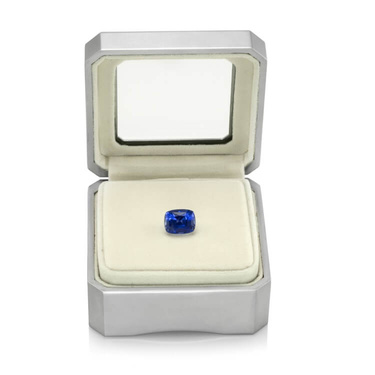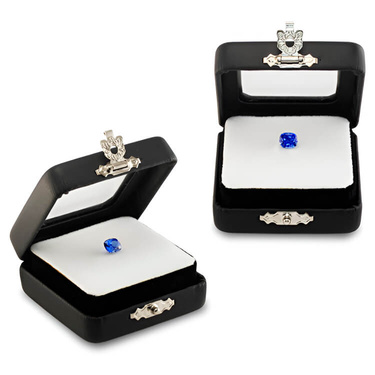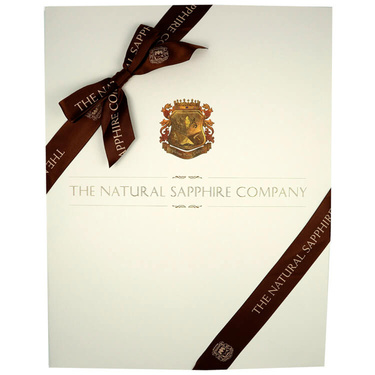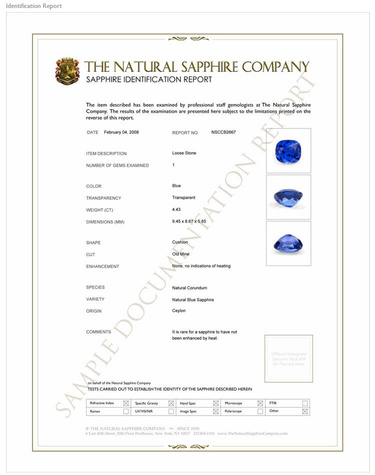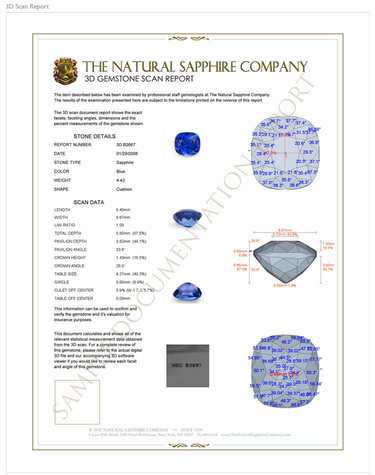- Stone14
- Reports3
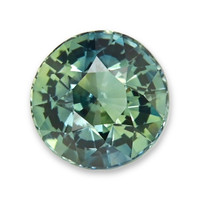

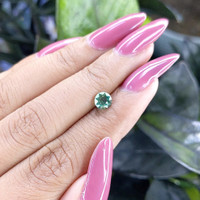
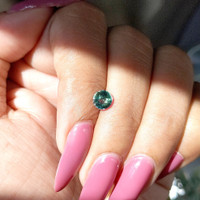
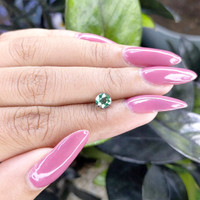
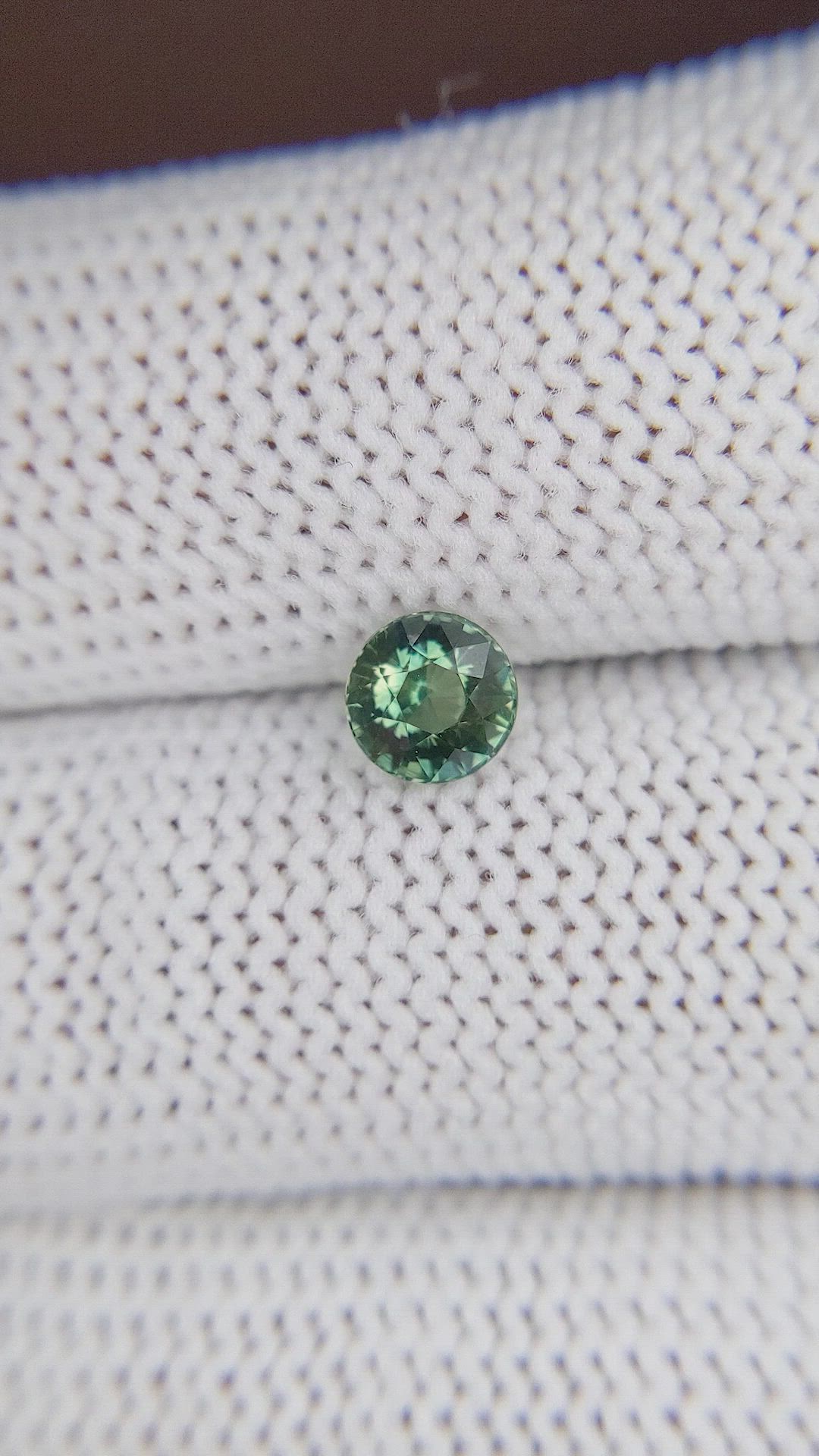
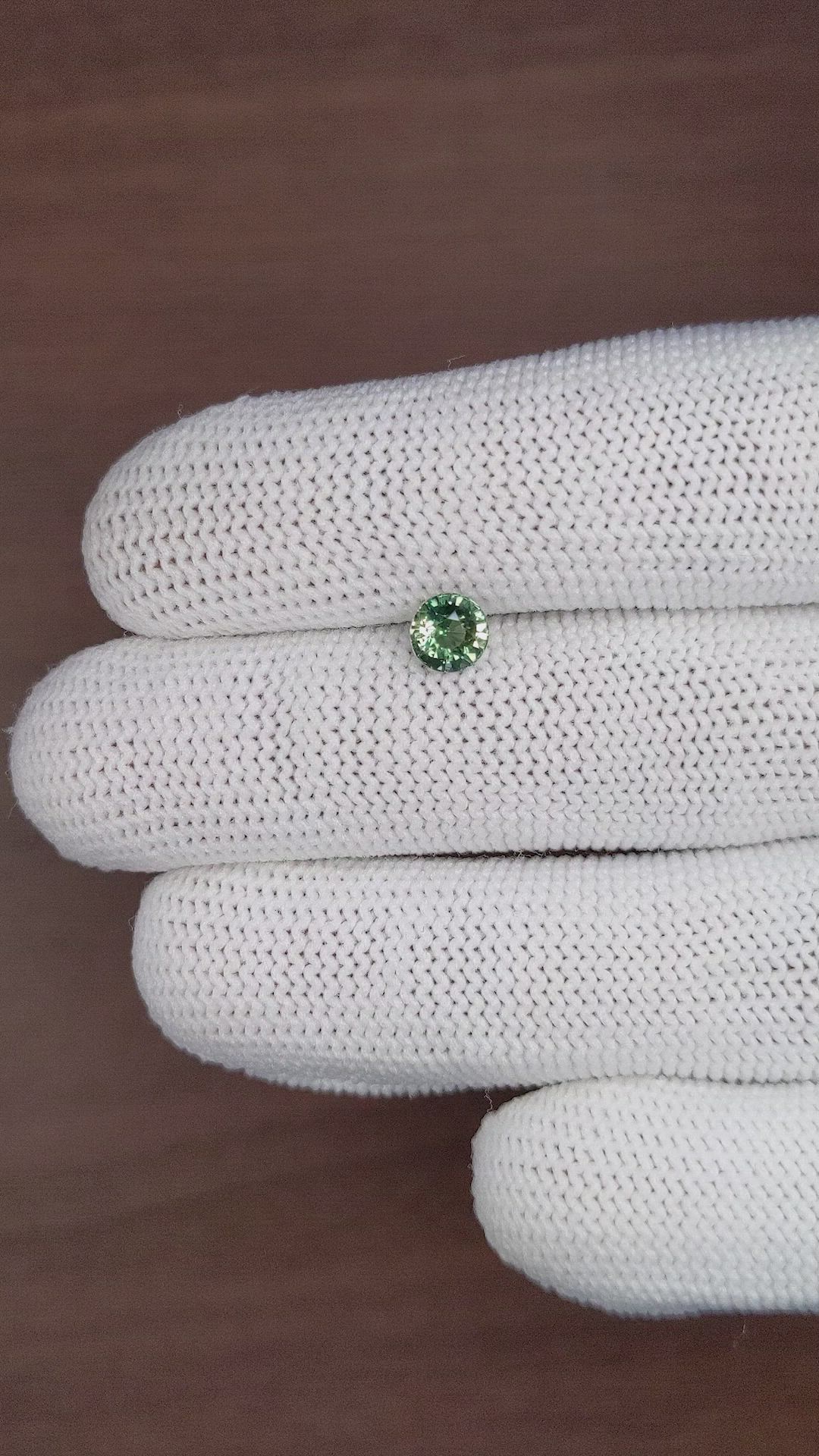
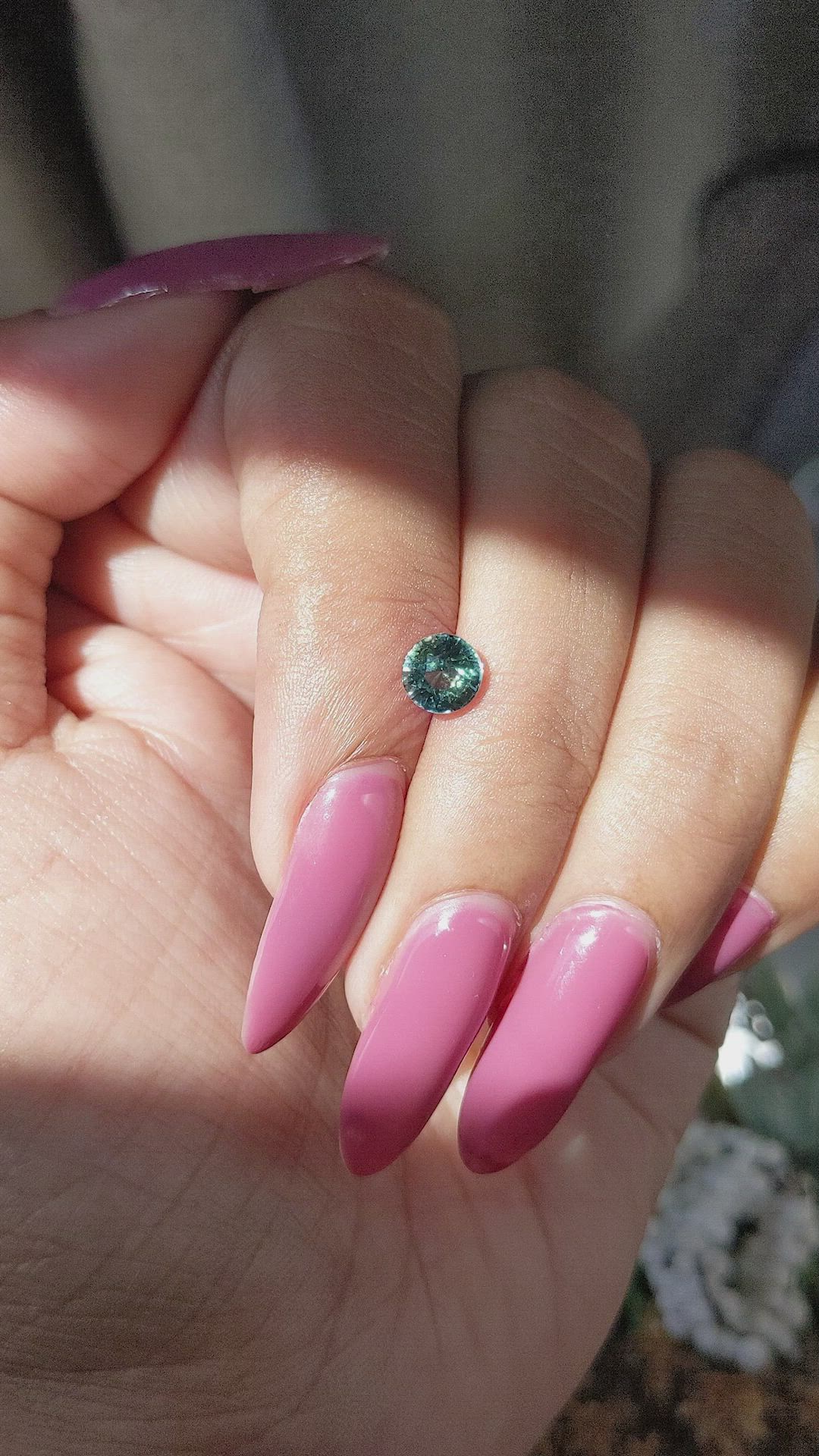
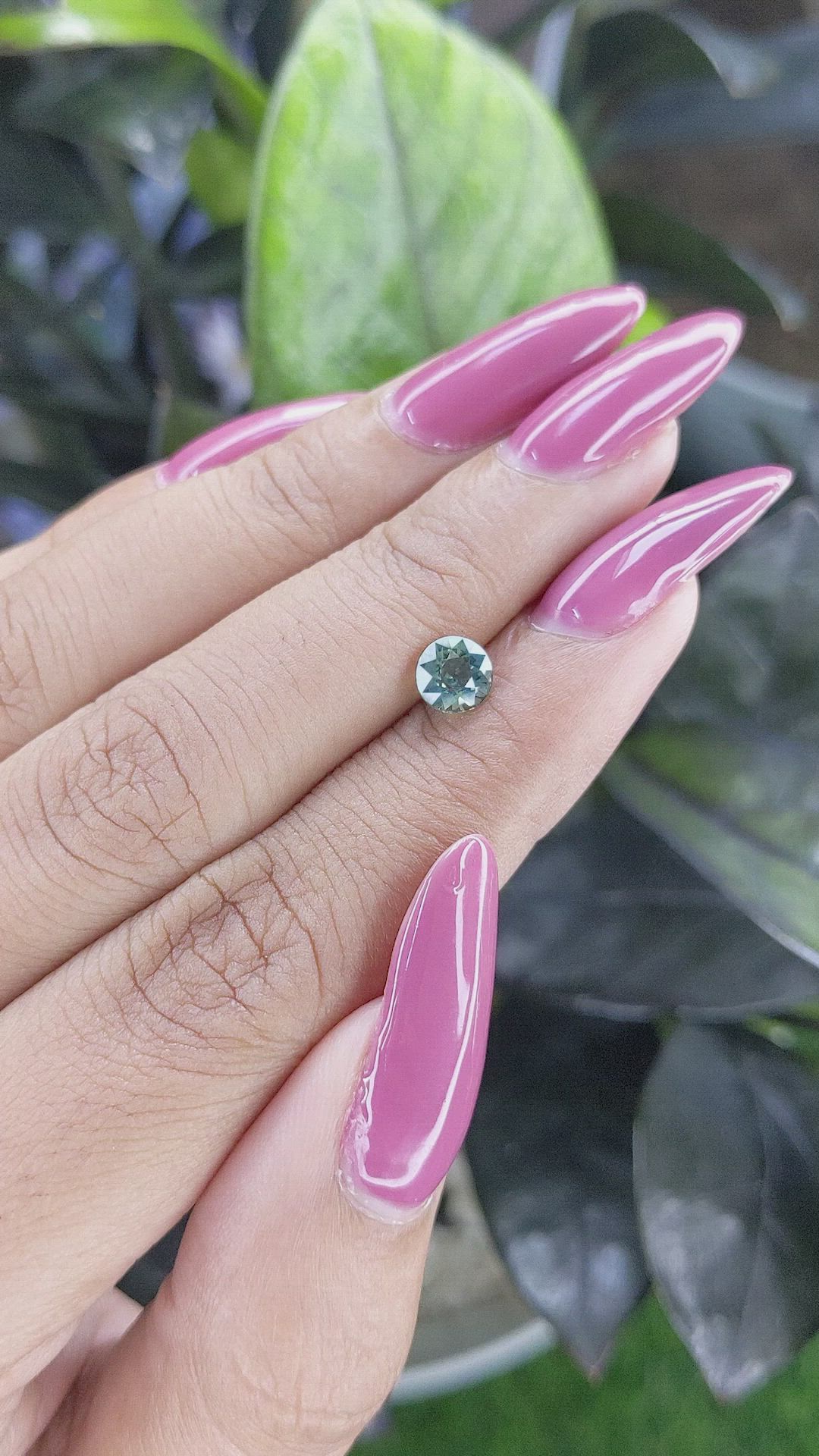
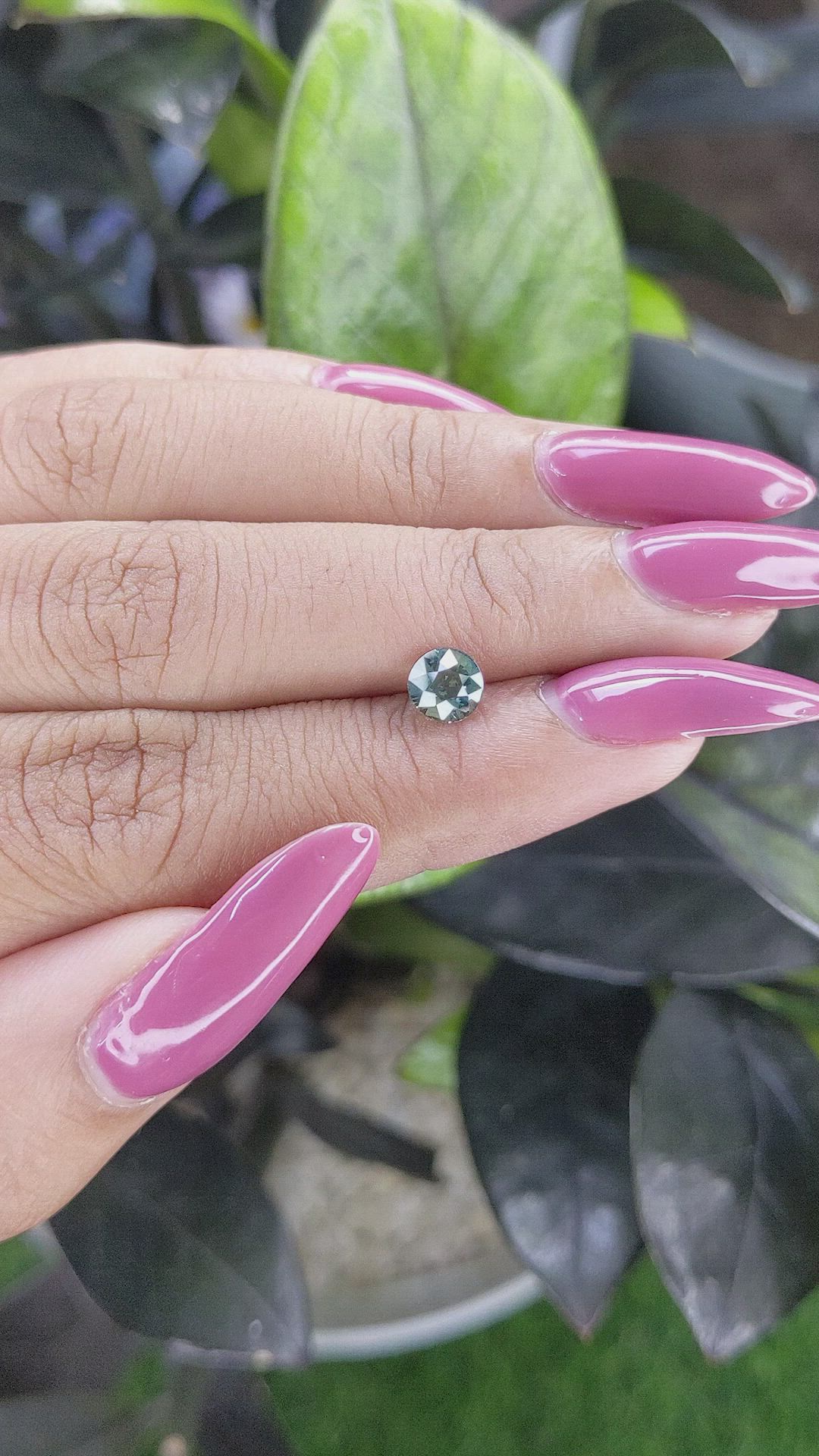

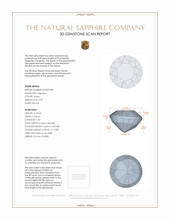
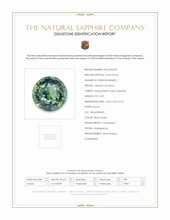
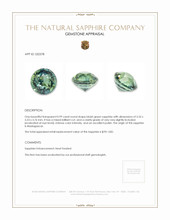
0.99 Ct. Bluish Green Sapphire from Madagascar
This loose stone ships by Dec 12
Item ID: | S32378 |
|---|---|
Dimensions (MM): help | Length: 5.52 Width: 5.53 Height: 3.76 |
Weight: | 0.99 Ct. |
Color: help | Bluish Green |
Color intensity: help | Intense |
Clarity: help | Very Very Slightly Included |
Shape: help | Round |
Cut: | Mixed Brilliant |
Cutting style: | Faceted |
Enhancements: help | Heat Treated |
Origin: help | Madagascar |
Per carat price: help | $708 |
This 0.99 carat round bluish green sapphire from Madagascar presents a precise combination of proportions and optical performance that will appeal to a technically minded collector, jeweler, or connoisseur. The stone measures 5.52 x 5.53 x 3.76 mm and is fashioned to a round outline with a mixed brilliant cut, a design choice that marries pavilion step faceting geometry with a brilliant style crown to balance light return with color saturation. Clarity is graded as very very slightly included evaluated at eye level, a designation that indicates minimal internal features which do not materially interrupt the gemisphere when viewed without magnification, preserving a clean window for light interaction. Color intensity is described as intense, exhibiting a bluish green tone that is both saturated and evenly distributed. The surface polish is excellent, executed to strict lapidary standards to maximize scintillation and minimize surface abrasions, and the stone has been heat treated using conventional thermal enhancement to optimize the apparent color and clarity without altering the fundamental corundum structure.
From a gemological perspective the mixed brilliant cut deployed on this round sapphire is selected to optimize the trade off between brilliance and color. The brilliant crown facet arrangement is designed to refract and internally reflect incident light back through the table, producing the optical return that trained observers expect from well cut corundum. The pavilion configuration incorporates facets that control the depth of light leakage and color concentration, avoiding a windowed appearance that can occur when pavilion depth is insufficient for a saturated tone. The symmetry of the girdle and alignment of pavilion main facets influence the stones face up appearance, and in this example the near perfect dimensional symmetry of 5.52 x 5.53 mm ensures isotropic light distribution across the round face. Optical contributors to the bluish green appearance stem from trace element chemistry within the corundum lattice, with iron and titanium occupying interstitial and substitutional sites that govern absorption bands in the visible spectrum. Pleochroic tendencies in such material may present as slightly different hues under polarized viewing angles, a characteristic that the mixed cut respects by orienting the table to present the most desirable color angle on the face up view.
The geological narrative of this sapphire begins millions of years ago in the dynamic crustal environment that would become Madagascar. Corundum crystals form where aluminium rich protoliths are subjected to high temperatures and pressures, in metamorphic terrain or in contact zones with basaltic melts where aluminium and oxygen are available and silica is relatively excluded. Under those conditions aluminium oxide molecules reorganize into the hexagonal crystal lattice of corundum, a process that requires sustained thermal exposure and sufficient mobility within the rock to allow crystal faces to develop. Trace elements such as iron and titanium infiltrate the growing lattice during crystal growth or via diffusion from surrounding melt or host minerals. Over geological timeframes slow cooling and continued recrystallization can produce larger euhedral to subhedral corundum grains, while subsequent tectonic uplift and surface erosion liberate those crystals into alluvial systems. In Madagascar, secondary concentration in river gravels and weathered saprolite beds enabled artisanal and industrial miners to recover gem quality material, where individual crystals were sorted, assessed for color zoning, and selected for cutting. The unique bluish green tonality of this sapphire thus records a precise set of formation conditions, including the relative abundances and valence states of iron and titanium, the thermal history that influenced color centers, and the mechanical history that preserved the transparency required for faceting.
The lapidary process applied after recovery was executed with both conservation of weight and optical optimization in mind, an approach consistent with the standards upheld by The Natural Sapphire Company. Preform orientation considered the stones pleochroic axes and included decisions about pavilion depth and crown height to maximize apparent color while retaining near one carat weight. Cutting to a mixed brilliant schema required precise index control on the cutting wheel, careful transfer of facet angles, and iterative polishes to ensure facet junctions meet with minimal deviation. The excellent polish is a product of progressive abrasive grits, final polishing agents selected for corundum, and consistent lap speeds to avoid subsurface damage. The heat treatment disclosed was applied under controlled conditions to reduce silk like rutile networks and to enhance hue stability, a standard intervention that improves marketability while preserving natural origin and crystal integrity. Final inspection includes an eye level clarity assessment confirming the very very slightly included grade, facet symmetry verification, and a color grade check under standardized lighting to ensure the intense bluish green identity. For the technically minded buyer this stone offers a clear provenance to Madagascar, a well documented enhancement history, and the considered craftsmanship necessary to display its corundum heritage to best effect, all presented under the assurance and services of The Natural Sapphire Company.





